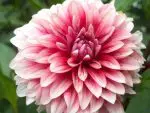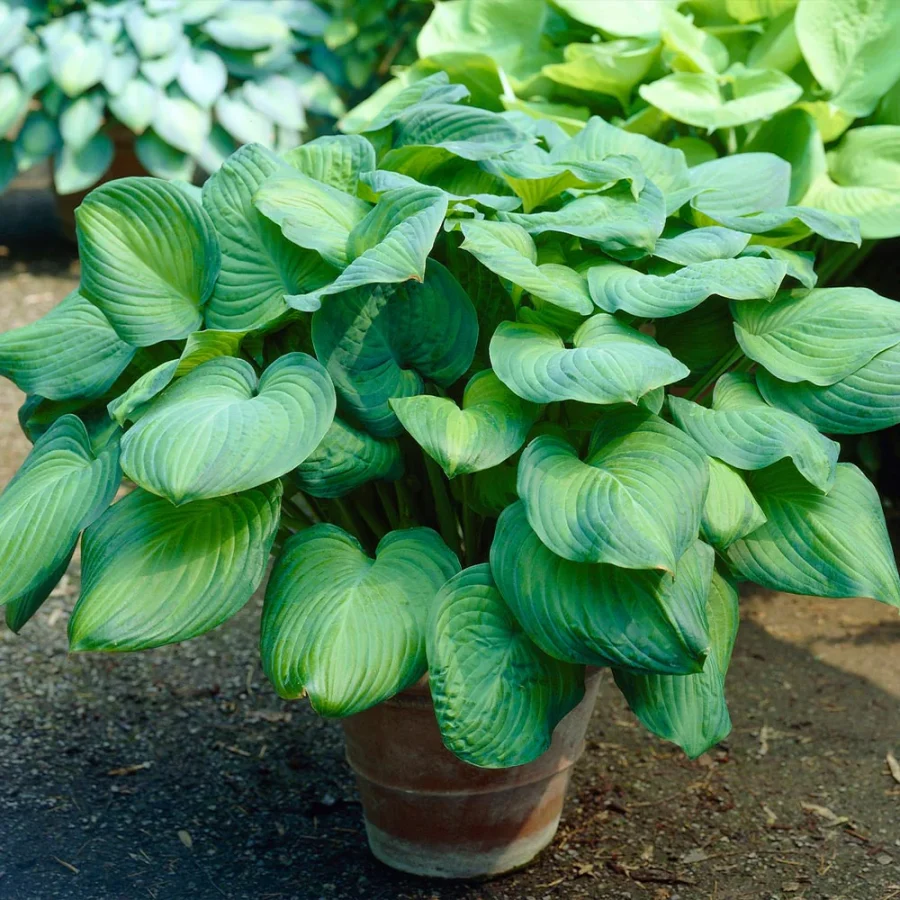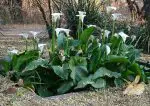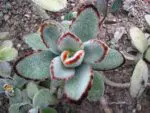This post contains affiliate links. If you buy something from one of our links we may earn a commission. Thanks
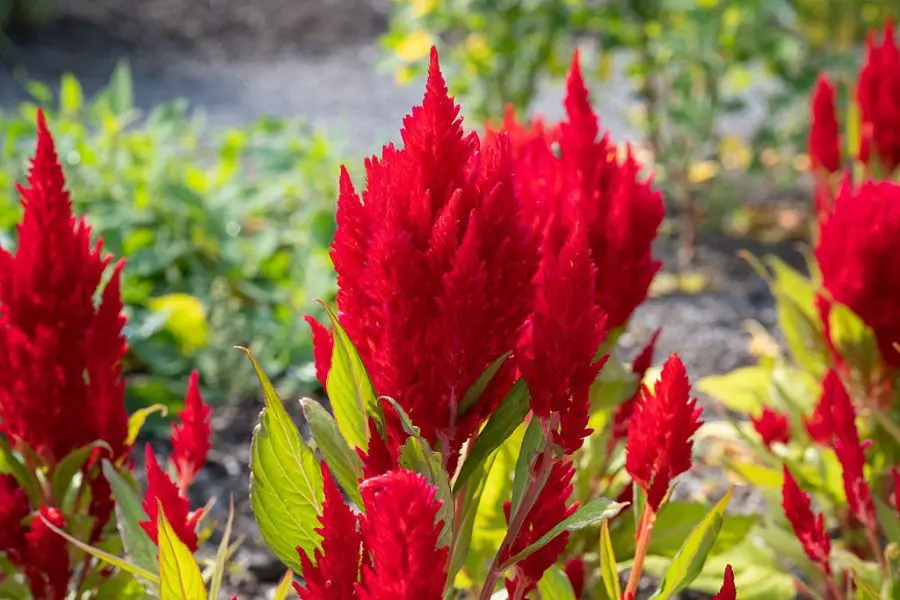
Are you ready to discover the secrets to successful Celosia Dragon’s Breath care indoors?
From ideal soil and potting techniques to pruning and propagation, we’ve got you covered.
Celosia Dragon’s Breath care indoors involves placing the plant in a sunny location with well-draining soil. Water moderately, letting the soil dry slightly between watering. Keep indoor temperatures around 60-75°F. Fertilize once a month with a balanced liquid fertilizer for optimal growth and vibrant foliage.
Follow our tips to unlock the full potential of this stunning indoor plant.
Welcome to the world of Celosia dragon’s breath care!
If you’re looking for a low-maintenance and fast-growing annual plant that will add a magnificent presence to your indoor space, then you’re in the right place.
The Dragon’s Breath Celosia plant is a showstopper with its red-hot plumes and iridescent maroon foliage.
In this guide, we’ll cover everything you need to know to care for your Dragon’s Breath Celosia plants, from ideal growing conditions to pest prevention and winter care.
So, let’s dive in and discover the glory of the celosias!
Introduction to Celosia Dragon’s Breath Care
Are you looking for an eye-catching and unique addition to your indoor garden?
Look no further than the Celosia Dragon’s Breath plant!
This vibrant annual brings a magnificent presence to any indoor space with its iridescent maroon foliage and showy plumes of scarlet flowers.
It is typically grown outdoors as a bedding plant or a patio pot but it can be grown indoors.
They are considered container annuals but indoors if kept warm they can become perennials.
But, like any living thing, this plant requires some attention and care.
In this post, we’ll cover everything you need to know about Celosia Dragon’s Breath care indoors, from ideal lighting and watering conditions to how to prune and propagate the plant for long-lasting beauty.
Whether you’re a seasoned indoor gardener or a first-time plant owner, we’ve got you covered with all the information you need to keep your Celosia Dragon’s Breath thriving.
Brief Overview of Celosia Dragon’s Breath Plant
Celosia Dragon’s Breath is an annual plant that belongs to the amaranth family, Amaranthaceae.
This plant is highly valued for its beautiful and exotic appearance, featuring bright red plumes that resemble flames.
The plant is relatively easy to grow and is a popular choice among gardeners, especially for bedding and container gardening.
With the proper care and attention, the Celosia Dragon’s Breath plant can thrive both indoors and outdoors.
Common Names for Celosia Dragon’s Breath Plant
The Celosia ‘Dragon’s Breath’ plant is a cultivar of the Celosia genus, known for its striking appearance and vibrant colors.
This plant goes by a few different common names, including:
• Dragon’s Breath Celosia
• Dragon’s Breath Cockscomb
• Dragon’s Breath Plumed Celosia
• Red Plumed Celosia
• Flame Flower
• Woolflower
However, it is most commonly referred to as Dragon’s Breath due to its fiery red foliage and unique plume-like flowers that resemble the fiery breath of a mythical dragon.
Is Celosia A Perennial?
Celosia is a tender perennial. In areas where it freezes, it is grown as an annual. Indoors it is a tender perennial and can live for several years.
Cock’s comb is a genus of annual or tender perennial plants in the Amaranthaceae (pigweed) family. https://plants.ces.ncsu.edu/plants/celosia/
Celosias are one of the most eye-catching annuals to grow in the garden. Technically speaking, however, they are tender annuals, as they are perennial in Zones 10 to 12. https://aggie-hort.tamu.edu/newsletters/hortupdate/hortupdate_archives/2006/apr06/Celosia.html
So just to set the record straight if you are growing Celosia indoors it is perennial and will produce blooms for several years.
Importance of Proper Care and Maintenance
While the Celosia Dragon’s Breath plant is known for its low maintenance requirements, proper care is the best way to ensure its health and longevity.
Taking care of this plant involves providing adequate light, watering, fertilization, and pest control.
In addition, it is important to understand the plant’s growing season and environmental preferences.
With the right care and attention, your Celosia Dragon’s Breath plant can thrive and bring joy to your home or garden for years to come.
Growing Celosia Dragon’s Breath Indoors
Growing Celosia Dragon’s Breath indoors is a great way to add color and vibrancy to your home, especially during the cooler months when outdoor gardening may not be feasible.
This beautiful annual plant features striking red plumes atop variegated foliage, making it an eye-catching addition to any space.
While growing Celosia Dragon’s Breath outdoors is relatively easy, growing it indoors requires a bit more attention to detail.
In this guide, we’ll cover everything you need to know to successfully grow and care for this magnificent plant indoors.
Is Celosia Perennial Indoors?
Celosia is typically grown as an annual plant, but it can be grown as a perennial indoors if you provide the right care and conditions.
Indoor Celosia Care In A Nutshell
To successfully grow Celosia indoors, consider the following tips:
Light: Celosia are sun-loving plants and need plenty of sunlight to thrive, so place it near a south- or west-facing window where it can receive at least 6-8 hours of bright, indirect sunlight per day.
Temperature: Maintain a consistent indoor temperature between 65-75°F (18-24°C) to support healthy growth. Avoid drafts or sudden temperature changes.
Soil: Use a well-draining, high-quality potting mix for your Celosia. Ensure that the soil is consistently moist but not waterlogged.
Watering: Water your Celosia regularly, but allow the top inch of soil to dry out between waterings. Overwatering can lead to root rot and other diseases.
Fertilizing: Apply a balanced, water-soluble fertilizer every 4-6 weeks during the growing season to promote vigorous growth and blooming.
Pruning: Pinch back the tips of the plant to encourage branching and a fuller appearance. Remove spent blooms to encourage continuous flowering.
Pest control: Keep an eye out for pests like aphids and spider mites. If you notice pest infestations, use insecticidal soap or neem oil to treat the problem.
By providing the right conditions and care, your Celosia plant can continue to grow and bloom indoors as a perennial.
Indoor benefits of Celosia Dragon’s Breath plant:
Celosia Dragon’s Breath plants are not only gorgeous, but they are also easy to care for and can be grown indoors.
They offer a lot of benefits, including their ability to remove toxins from the air and their long-lasting blooms that add color and life to any space.
Growing these plants indoors also means you can enjoy their beauty all year round.
Ideal plant size for indoor growth:
When growing Celosia Dragon’s Breath plants indoors, it’s essential to consider the plant’s size.
These plants can grow up to 3 feet tall, so it’s crucial to choose the right size pot to keep them at a manageable size.
A 6-inch pot is suitable for a young plant, and as the plant grows, it can be repotted into a 10- or 12-inch pot.
Keeping the plant at a manageable size will also help ensure that it receives enough light and water.
Optimal Light Conditions Indoors:
Light is essential for the growth and development of Celosia Dragon’s Breath plants.
These plants require bright, indirect light to thrive.
When growing them indoors, place them in a location that receives at least 6 hours of bright, indirect light per day.
If the plant isn’t getting enough light, it will become leggy and won’t produce as many flowers.
Watering Requirements For Indoor Growth:
Celosia Dragon’s Breath plants need consistent moisture to grow and thrive.
However, they don’t like to be overwatered, so it’s important to find the right balance.
Water the plant thoroughly when the top inch of soil is dry, and make sure the pot has proper drainage.
During the winter months, when indoor air is drier, you may need to water the plant more frequently to prevent it from drying out.
Soil and pots suitable for indoor growth – coco coir and perlite:
The right soil and pot can make a big difference in the growth and health of your Celosia Dragon’s Breath plant.
A soilless potting mix made from coco coir and perlite is a great option.
Coco coir is an eco-friendly and sustainable alternative to peat moss and helps retain moisture, while perlite helps with drainage.
Choosing a pot with proper drainage is also essential to prevent water from pooling at the bottom of the pot, leading to root rot.
Optimal Light Conditions
Proper lighting is crucial for the growth and development of Celosia Dragon’s Breath indoors.
Outdoors these plants thrive in full sunlight and require at least six hours of direct sunlight each day to grow to their full potential.
However, they can also adapt to lower light conditions, making them suitable for indoor growing.
When growing Celosia Dragon’s Breath indoors, it’s important to place them in a location that receives bright, indirect sunlight.
East- and west-facing windows are ideal, as they provide ample sunlight without the harsh direct rays of the midday sun.
If your home doesn’t have access to sufficient natural light, you can also use artificial grow lights to supplement your plants’ needs.
LED grow lights are a great option for indoor growing, as they produce full-spectrum light that mimics natural sunlight.
Place the grow light approximately 12 -24 inches above the plant, and keep it on for 14-16 hours each day.
The exact distance depends on the strength of the light. Follow the manufacturer’s instructions.
This will ensure that your Celosia Dragon’s Breath plants receive the optimal amount of light to grow healthy and strong.
Remember to monitor your plants closely, as too much or too little light can have adverse effects on their growth.
If your plant is receiving too much light, its leaves may become scorched or yellowed.
Conversely, if it’s not receiving enough light, its growth may become stunted, and its leaves may turn pale or droop.
Fertilizing, Temperature, and Humidity
Are you wondering how to take care of your Celosia Dragon’s Breath plant and ensure it grows to its full potential?
In this section, we’ll explore the importance of fertilizing, and maintaining proper temperature, and humidity levels for your indoor Celosia Dragon’s Breath plant.
With these tips, you can keep your plant healthy and thriving all year round. So let’s dive in!
Fertilizer requirements for strong growth and flower production
Proper fertilization is crucial to the growth and flowering of Celosia Dragon’s Breath plants.
Fertilizers should contain a balanced blend of essential nutrients such as nitrogen, phosphorus, and potassium.
A slow-release fertilizer is a great option for indoor growth since it gradually releases nutrients over time.
Liquid fertilizers can also be used, but it’s important not to over-fertilize, as this can lead to burnt foliage and stunted growth.
Temperature and humidity requirements
Temperature and humidity play a crucial role in the growth and health of Celosia Dragon’s Breath plants.
These plants thrive in warm and humid weather with temperatures ranging from 60 to 80 degrees Fahrenheit.
They can also tolerate cooler night temperatures, but not frost.
High humidity levels are essential for proper growth and to prevent pests and diseases.
How to maintain stable temperature and humidity levels
Maintaining stable temperature and humidity levels is critical for the health of your Celosia Dragon’s Breath plant.
To ensure proper temperature, keep your plant in a warm and sunny location, away from cold drafts or air conditioning.
Use a humidifier or place a tray of water near the plant to increase humidity levels.
You can also mist the leaves regularly to maintain proper moisture levels.
If the air is too dry, the plant may suffer from leaf drop and stunted growth.
Pruning And Repotting Celosia Dragon’s Breath
If you want to keep your Celosia Dragon’s Breath plant healthy and looking its best, pruning and repotting are important tasks to tackle.
These simple practices help maintain the plant’s shape and promote healthy growth.
In this section, we’ll cover everything you need to know about pruning and repotting your Celosia Dragon’s Breath plant, including when to do it and the best techniques to use.
So get ready to roll up your sleeves and give your plant some much-needed TLC!
How to prune for a bushier plant and more flower production:
Pruning is an essential aspect of Celosia Dragon’s Breath care.
Regular pruning will promote bushier growth and stimulate more flower production.
Prune your plant after it has finished blooming and when it reaches a height of 8-10 inches.
Use a pair of clean and sharp pruning shears to cut the stems back to 4-6 inches from the base of the plant.
This will encourage new growth and a fuller appearance.
When and how to repot:
Repotting is an important part of celosia dragon’s breath care as the plant can outgrow its pot and become root-bound.
When you notice that the roots are coming out of the drainage holes or the soil is dry again soon after watering, or drains quickly it’s time to repot.
• Choose a pot that’s one size larger than the current one and use a well-draining soil mix.
• Gently remove the plant from its current pot, being careful not to damage the roots.
• Place the plant in the new pot and fill in the gaps with fresh soil.
• Water thoroughly and place the plant in a location with bright, indirect light.
Propagation, Pests, and Diseases
If you’re a fan of the Celosia Dragon’s Breath plant, chances are you’re already thinking about propagating it.
Fortunately, it’s a relatively easy process, and we’ll be covering it in this section.
We’ll also be discussing some of the most common pests and diseases that can affect your plant, as well as how to prevent and treat them.
With the right care and attention, your Celosia Dragon’s Breath plant can thrive and continue to brighten up your home for years to come.
Propagating Celosia Dragon’s Breath: Seeds or Cuttings
Celosia Dragon’s Breath is a stunning and vibrant plant that can be propagated through two methods: seeds and cuttings.
In this post, we will guide you through the steps for both propagation methods so you can choose the one that suits your needs and preferences.
Propagation Method 1: Seeds
Seed preparation:
Soak your Celosia Dragon’s Breath seeds in lukewarm water for 4-6 hours to soften the seed coat and promote germination.
Sowing seeds:
• Start your seeds indoors 6-8 weeks before the last expected frost date.
• Fill seed trays or small pots with a well-draining, seed-starting mix.
• Place the seeds on the surface, then lightly cover them with a thin layer of soil (about 1/8 inch deep).
• Gently mist the soil to keep it moist.
Germination:
Place the seed trays or pots in a warm, well-lit area with a temperature of around 70-75°F (21-24°C).
Keep the soil consistently moist but not waterlogged. Germination should occur within 10-14 days.
Transplanting seedlings:
After the seedlings develop at least two sets of true leaves and outdoor temperatures are consistently above 50°F (10°C), they are ready to be transplanted.
Acclimate your seedlings to outdoor conditions by gradually increasing their exposure over a week.
Then, plant them in a location with well-draining soil and full sun exposure, spacing them about 12-18 inches apart.
Propagation Method 2: Cuttings
Taking cuttings:
Select healthy, vigorous stems with at least 3-4 sets of leaves.
Use a sharp, clean pair of scissors or pruning shears to cut a 4-6 inch section just below a leaf node.
Preparing the cuttings:
Remove the lower leaves from the cutting, leaving only the top 2-3 sets of leaves.
Optionally, dip the cut end in a rooting hormone to encourage faster root development.
Planting the cuttings:
Fill small pots or containers with a well-draining, moistened potting mix.
Create a hole in the soil using a pencil or your finger, and insert the cut end of the cutting into the hole.
Gently press the soil around the cutting to secure it in place.
Rooting the cuttings:
Cover the pot with a clear plastic bag or place it in a propagator to maintain high humidity.
Place the pot in a warm, bright location with indirect sunlight. Keep the soil consistently moist but not soggy.
Monitoring root development:
Roots should begin to form within 2-4 weeks. Gently tug on the cutting after this time; if you feel resistance, it is likely that roots have developed.
Transplanting rooted cuttings:
Once the cuttings have developed a healthy root system, transplant them into larger pots or directly into the garden, following the same guidelines as for seedlings in terms of spacing, sunlight, and soil conditions.
Whether you choose to propagate your Celosia Dragon’s Breath through seeds or cuttings, both methods can be successful with proper care and attention.
Follow the steps above, and soon you’ll be enjoying the vibrant colors and unique textures of your own Celosia Dragon’s Breath plants.
Common Pests and Diseases and How to Prevent and Treat Them
Just like any other plant, Celosia Dragon’s Breath is susceptible to pests and diseases.
The most common pests that affect this plant are spider mites, aphids, and whiteflies.
These insects feed on the plant’s sap, weaken it, and make it susceptible to diseases.
The most common diseases that affect Celosia Dragon’s Breath are powdery mildew, root rot, and bacterial leaf spot.
Treating Pests and Diseases in Celosia Dragon’s Breath
Celosia Dragon’s Breath can be affected by various pests and diseases that can weaken the plant and make it susceptible to further damage.
We will discuss the most common pests and diseases that afflict this plant and provide effective treatment options to help you maintain a healthy and vibrant Celosia Dragon’s Breath.
Pest Control: Aphids, spider mites, and whiteflies:
These insects feed on the plant’s sap, weaken it, and make it susceptible to diseases.
To treat infestations, follow these steps:
• Inspect your plant regularly and remove any visible pests by hand or with a blast of water from a hose.
• Use insecticidal soap or neem oil as a natural, eco-friendly solution to treat infestations. Follow the manufacturer’s instructions for proper application rates and timing.
• Introduce beneficial insects like ladybugs, lacewings, or predatory mites that feed on these pests and help maintain a balanced ecosystem in your garden.
Disease Control: Powdery mildew, Root rot, Bacterial leaf spot
This fungal disease appears as a white, powdery substance on the leaves and stems of the plant.
To treat powdery mildew:
• Remove affected leaves and dispose of them properly to prevent the spread of the fungus.
• Improve air circulation around your plants by spacing them correctly and pruning to promote a more open growth habit.
• Apply a fungicide specifically designed for powdery mildew, following the manufacturer’s instructions for application rates and timing.
Root rot:
Root rot is caused by fungi that thrive in overly moist or poorly drained soil.
To treat and prevent root rot:
• Ensure your plant is growing in well-draining soil and avoid overwatering.
• Remove affected plants and dispose of them properly to prevent the spread of the fungus.
• Use a fungicide specifically designed for root rot, following the manufacturer’s instructions for application rates and timing.
Bacterial leaf spot:
This disease manifests as small, water-soaked spots on the leaves, which can enlarge and turn dark brown or black.
To treat bacterial leaf spot:
• Remove affected leaves and dispose of them properly to prevent the spread of the bacteria.
• Avoid overhead watering, as wet foliage can promote the spread of the disease.
• Apply a copper-based fungicide or bactericide, following the manufacturer’s instructions for application rates and timing.
By closely monitoring your Celosia Dragon’s Breath plants for signs of pests and diseases, and taking prompt action when problems arise, you can help ensure that your plants remain healthy and vibrant.
Utilize the treatment options provided in this post to address common pests and diseases, and enjoy the stunning beauty of your Celosia Dragon’s Breath plants.
Growing Dragon’s Breath Celosia Indoors And Out
Planting and Caring for Your Seeds
Welcome to our blog section dedicated to Celosia Dragon’s Breath seeds!
This stunning variety of Celosia features fiery red plumes and vibrant foliage, making it a showstopper in any garden or container.
In this post, we’ll provide detailed planting instructions to help you grow your very own Dragon’s Breath Celosia from seeds.
Planting Instructions:
Seed preparation:
Before planting, soak your Celosia Dragon’s Breath seeds in lukewarm water for about 4-6 hours. This helps soften the seed coat, promoting better germination.
Sowing seeds:
You can start your seeds indoors 6-8 weeks before the last expected frost date. Fill seed trays or small pots with a well-draining, seed-starting mix. Place the seeds on the surface, and then lightly cover them with a thin layer of soil (about 1/8-inch deep). Gently mist the soil to keep it moist.
Germination:
Place the seed trays or pots in a warm, well-lit area with a temperature of around 70-75°F (21-24°C). Keep the soil consistently moist but not waterlogged. Germination should occur within 10-14 days.
Transplanting seedlings:
Once your seedlings have developed at least two sets of true leaves and outdoor temperatures are consistently above 50°F (10°C), they are ready to be transplanted. Gradually acclimate your seedlings to outdoor conditions by placing them outside for a few hours each day, gradually increasing their exposure over a week.
Planting outdoors:
Choose a location with well-draining soil and full sun exposure (at least 6-8 hours of sunlight per day). Space your Celosia Dragon’s Breath seedlings about 12-18 inches apart, and water them thoroughly after planting.
Caring for Your Dragon’s Breath Celosia:
Watering:
Water your Celosia plants regularly, allowing the top inch of soil to dry out between waterings.
Avoid overwatering, as this can lead to root rot and other diseases.
Fertilizing:
Apply a balanced, water-soluble fertilizer every 4-6 weeks during the growing season to promote healthy growth and blooming.
Pruning and deadheading:
Pinch back the tips of your plants to encourage branching and a fuller appearance.
Remove spent blooms to encourage continuous flowering and prevent the plant from setting seed, which can decrease overall vigor.
Pest control:
Keep an eye out for common pests like aphids and spider mites. If you notice an infestation, use insecticidal soap or neem oil to treat the problem.
With the right care and attention, your Celosia Dragon’s Breath seeds will grow into vibrant, eye-catching plants that will brighten up your garden or containers.
We hope these planting instructions help you achieve a successful and rewarding gardening experience with your Dragon’s Breath Celosia!
Winter Care for Celosia Dragon’s Breath
Winter can be a challenging time for gardeners, especially when it comes to keeping plants alive and healthy.
Celosia Dragon’s Breath is no exception, but with the right care, it can thrive even in the coldest months.
In this section, we’ll explore how to care for your Celosia Dragon’s Breath during the winter season, including tips for protecting it from frost, adjusting its watering and fertilizer schedules, and dealing with common winter problems.
With the right approach, you can ensure that your Celosia Dragon’s Breath survives into the winter.
Preparing for the First Frost:
Are you growing Celosia outdoors in pots?
As the cooler months approach, it’s important to prepare your Celosia Dragon’s Breath plant for bringing it indoors.
Although Celosia is a tender annual where it freezes you can extend its season by bringing it indoors before frost.
If properly cared for, it can live for several months or more indoors, providing you with long-lasting beauty and vibrant color.
You could also start new indoor plants in the fall by taking cuttings or sowing seeds.
Maintaining Glory During Cooler Months:
Even during the cooler months, your Celosia Dragon’s Breath can still add a magnificent presence to your indoor garden.
To keep your plant healthy and thriving during this time, it’s important to pay attention to its needs for light, water, and fertilizer.
Celosia Dragon’s Breath is often grown as an annual plant, which means that it completes its lifecycle in one growing season and will not come back the following year if it freezes.
But if you grow it indoors in pots it can last several years. If you grow it outdoors in pots be prepared to bring them indoors.
It may not act the same as a totally indoor-grown Celosia if you bring it in during the fall.
You should at least be able to extend its life a bit. It depends on how much cold it experienced while it was outdoors.
So you can start new plants every 6 months to always have them blooming indoors.
With the right conditions, this plant can thrive and produce stunning blooms for months on end, making it a great choice for indoor gardening enthusiasts.
FAQ
Welcome to our FAQ section! We’ve compiled a list of the most common questions and concerns about growing Celosia Dragon’s Breath.
Whether you’re a seasoned gardener or just starting out, we hope to provide you with helpful answers and tips for successful indoor cultivation of this vibrant plant.
So, let’s get started!
Q. Is Celosia Dragon’s Breath Plant Poisonous?
A. No, Celosia Dragon’s Breath plant is not poisonous to humans or pets.
In fact, it is edible and commonly grown as a leafy green vegetable in many parts of the world.
Q. Does Dragon’s Breath plant come back every year?
A. No, Dragon’s Breath plant is an annual plant, which means it completes its life cycle in one growing season and won’t come back next year.
Q. Can Celosia Dragon’s Breath grow indoors?
A. Yes, Celosia Dragon’s Breath can grow indoors as long as it has enough light, proper watering, and adequate humidity. It can be a great addition to your indoor garden or as a houseplant.
Q. What temperature can Dragons Breath Celosia tolerate?
A. Celosia Dragon’s Breath prefers warm temperatures between 60-85 degrees Fahrenheit. It is sensitive to frost and can’t tolerate freezing temperatures, so make sure to bring it indoors or cover it during cold snaps.
Q. How long do Celosia plants last?
A. Celosia Dragon’s Breath is an annual plant that can live for several months up to a year, depending on its growing conditions and how well it’s taken care of. With proper care, it can bloom for up to 10 weeks.
Q. Does Dragon’s Breath spread?
A. No, Celosia Dragon’s Breath doesn’t spread like some other plants. It grows upright and doesn’t produce runners or suckers, so it won’t take over your garden or other plant beds.
Q. Does Dragon’s Breath attract bugs?
A. Like any other plant, Celosia Dragon’s Breath can attract pests such as spider mites and aphids.
However, with proper care, you can reduce the likelihood of a pest infestation.
Regularly check your plants for signs of pests and treat them immediately if you notice any.
Q. Where is the best place to plant Dragons Breath?
A. Celosia Dragon’s Breath prefers full sunlight, so it’s best to plant it in a location with at least 6 hours of direct sunlight per day.
It also likes well-draining soil and consistent moisture, so make sure to choose a spot with good drainage.
Q. Can you plant Dragons Breath in fall?
A. Celosia Dragon’s Breath is a warm-weather plant and prefers to be grown in the warmer months.
It’s best to plant it in the spring or early summer, so it has time to establish itself before cooler temperatures arrive.
However, if you live in a warm climate, you may be able to plant it in the fall.
Conclusion
Congratulations! You are now equipped with all the knowledge you need to successfully care for your Celosia Dragon’s Breath plant indoors.
By providing your plant with the right amount of light, water, and fertilizer, maintaining stable temperature and humidity levels, and addressing any pest or disease issues promptly, you can enjoy a beautiful display of vibrant flowers all year round.
Remember to prune and repot as needed, and take the necessary precautions to ensure your plant survives the winter.
With a little love and attention, your Celosia Dragon’s Breath plant will thrive and continue to bring joy to your indoor space.
Summary of key points:
Throughout this guide, we’ve covered everything you need to know about growing and caring for Celosia Dragon’s Breath.
We discussed the benefits of growing this beautiful plant indoors, the optimal lighting and temperature conditions, and how to maintain stable humidity levels.
We also talked about fertilizing, pruning, and repotting, as well as propagation, pests, and diseases.
Lastly, we shared tips on winter care for your Celosia Dragon’s Breath.
Try Growing Celosia Dragon’s Breath In The Garden Or Indoors:
Now that you know how to properly care for your Celosia Dragon’s Breath, it’s time to put your knowledge into action!
Whether you choose to grow it in your garden or in a pot indoors, this plant is sure to add a magnificent presence with its iridescent maroon foliage and showy plumes of scarlet flowers.
Remember to share your success and joy with others, and spread the glory of the Celosias!
Read more: 20 Benefits Of Keeping Indoor Plants For Improved Lifestyle













